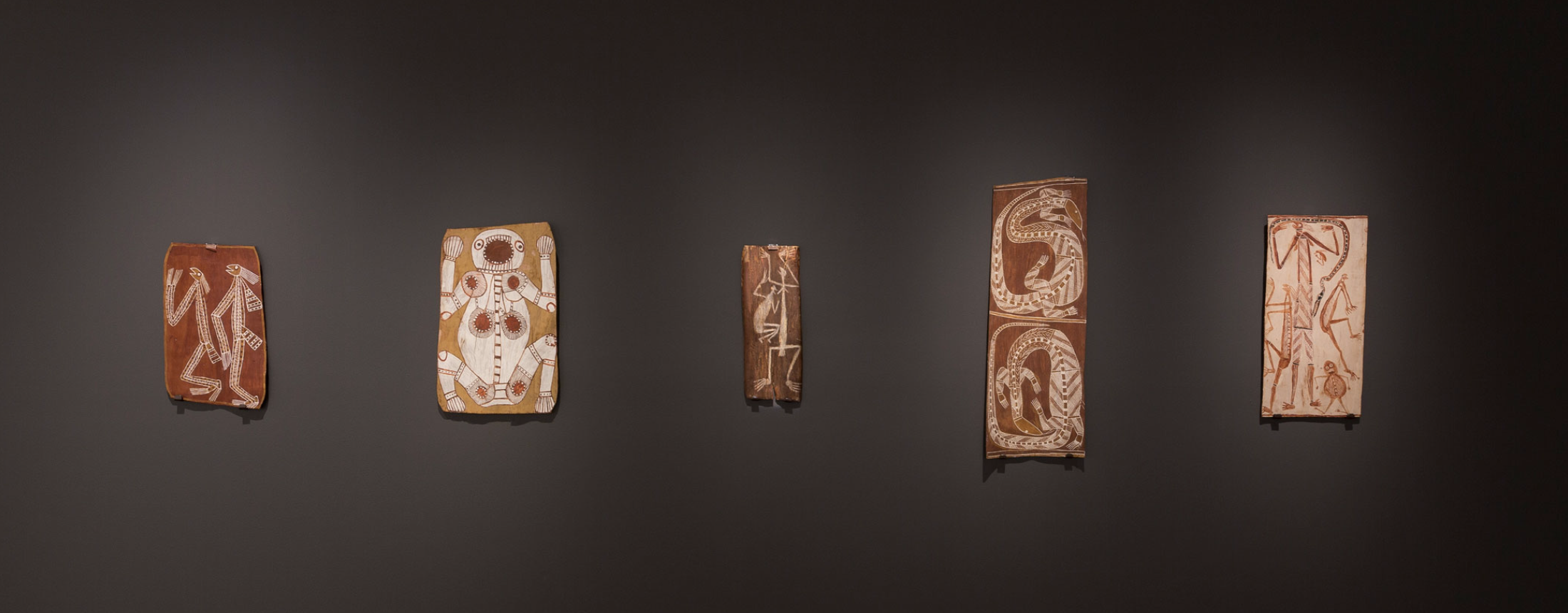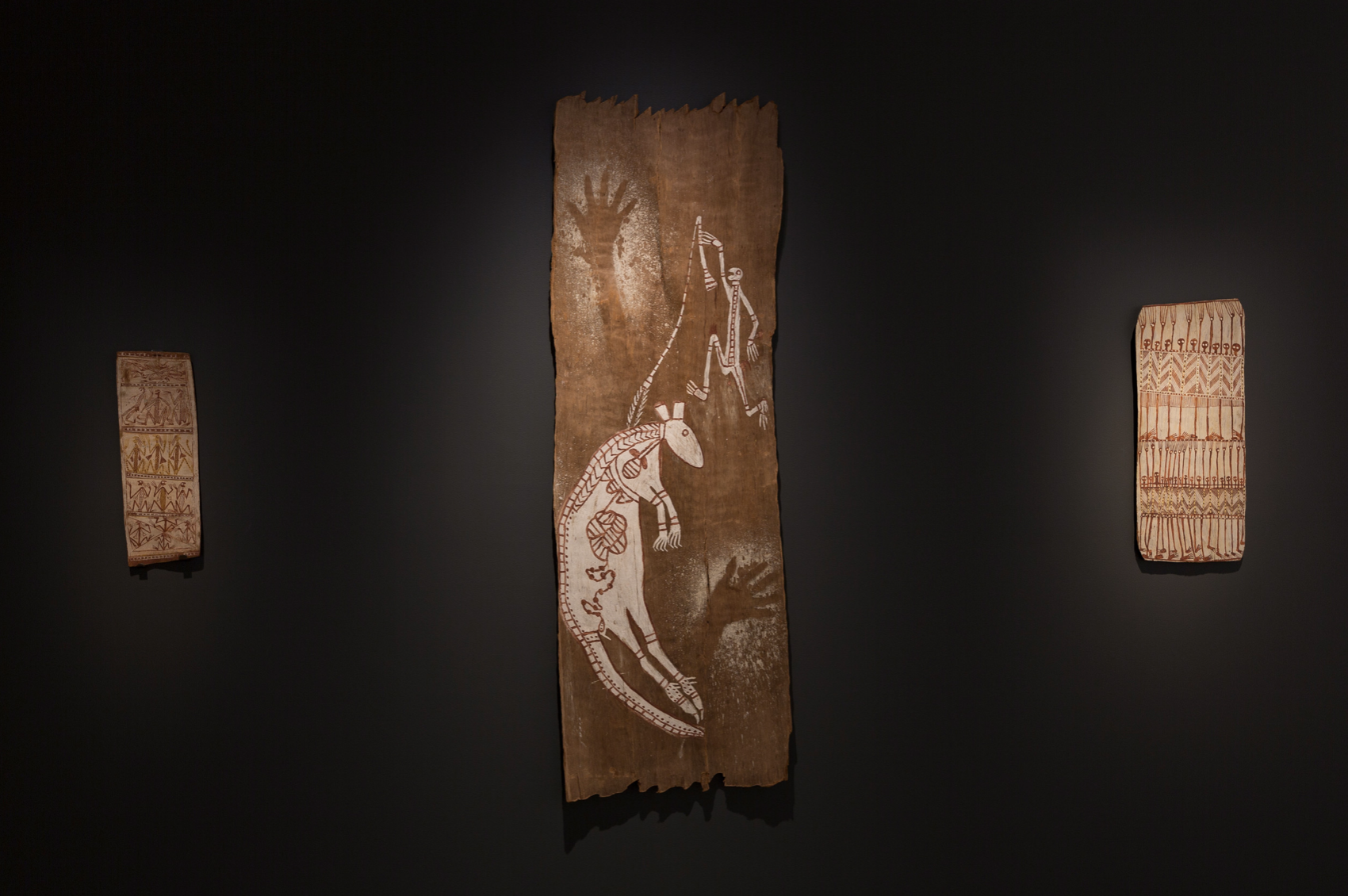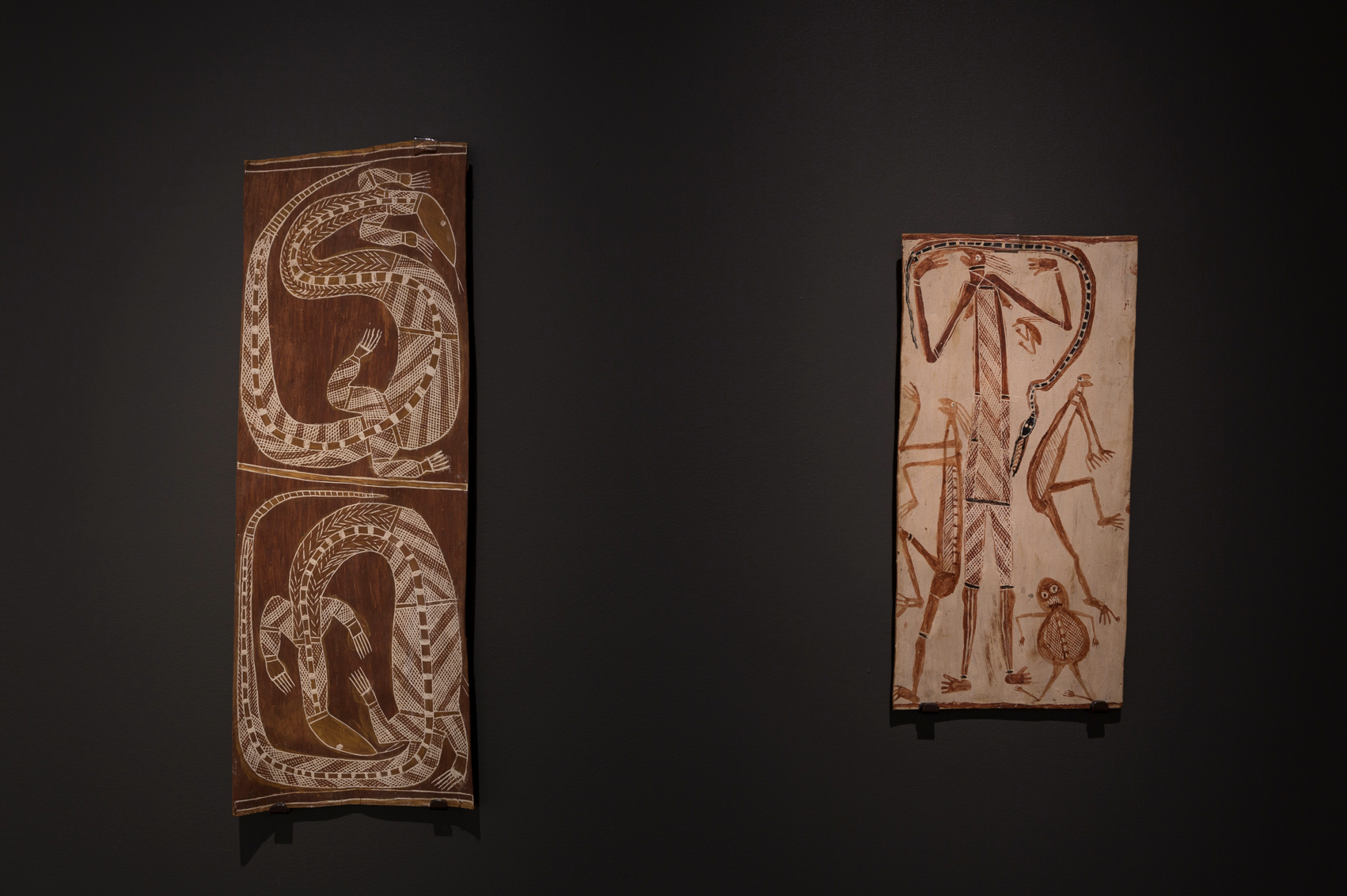
Installation view, Yirawala: Artist Room, Museum of Contemporary Art Australia, 2018. Image courtesy and © The Estate of the artist licensed by Aboriginal Artists Agency. Photograph: Jessica Maurer
Yirawala was a senior Kuninjku artist and a leading figure in the struggle for land rights against mining interests in western Arnhem Land. He was born circa 1903 at Marrkolidjban in the Liverpool River region of western Arnhem Land in the Northern Territory and spent much of his life living and working at Minjilang (Croker Island) where he died in 1976.
In 1993 the MCA was gifted the Arnott’s Biscuits Collection. Consisting of over 270 bark paintings – including 42 works by Yirawala – this is widely considered to be one of the most important collections of Aboriginal bark paintings in the country.

Installation view, Yirawala: Artist Room, Museum of Contemporary Art Australia, 2018. Image courtesy and © The Estate of the artist licensed by Aboriginal Artists Agency. Photograph: Jessica Maurer
Yirawala’s ochre on bark paintings have their origins in the many rock art paintings and sites across western Arnhem Land. Within this rich cultural history, Yirawala used the stylistic traditions of the works that had transformed the rocky landscape of his country. Yet he was also an innovator, credited as the first Kuninjku artist to use white pigment as a background for his paintings, achieving a degree of luminosity within the work that had not previously been seen. This shimmering quality is enhanced by the use of dotting and rarrk; a word that invokes the ancestral power and cultural authority of this use of fine lines or cross-hatching, which is also associated with ceremonial body painting.

Installation view, Yirawala: Artist Room, Museum of Contemporary Art Australia, 2018. Image courtesy and © The Estate of the artist licensed by Aboriginal Artists Agency. Photograph: Jessica Maurer
For Yirawala and the Kuninjku people, these structural features encompass Djang and the related ceremonies of Mardayin and Wubarr; and the funereal rites associated with Lorrkkons (mortuary poles). As a senior figure, Yirawala took seriously the weight of representing the sacred elements of his Kuninjku heritage. He used his knowledge to protect his culture and to fight for the land over which sovereignty, by him or any Kuninjku, was never relinquished.
This is the fourth exhibition in the Artist Room, a series highlighting an artist’s work in the MCA Collection.
Curator: Dominic Kavanagh
SOURCE: MCA Australia